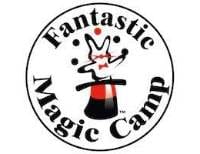Are you looking for a great way for your children to gain strength, increase flexibility, sharpen concentration, acquire self-confidence and make new friends? Consider enrolling them in martial arts.
When asked why children should practice the martial arts, Master Lili Rehak responded, “Confidence. Many children are shy and awkward. When they get involved in martial arts, they learn, perform, go to tournaments, compete and go through the testing process. This all serves to make children much more confident in themselves. If they can accomplish all of the above, there is no limit to what they can do in other aspects of their lives.”
The martial arts are primarily Asian forms of self-defense that are sometimes performed as a sport. There are dozens of styles including Aikido, Ju-Jitsu, Judo, Kung Fu, Tae Kwon Do, Tai Chi and Tang Soo Do. These styles originated in China, Japan and Korea. One of the most popular martial arts is karate which originated on the Japanese island of Okinawa. Karate means “empty hand” because the practitioner primarily uses his or her bare hands and feet and the name has become synonymous with many similar styles of martial arts.
So, how do you get started? First, find a style and martial arts school that interests your family. It is important to find a reputable school, so be sure to check the history of the school, longevity in the community and integrity of the owner. Many schools will allow you to watch a class to see if you’re interested and offer introductory classes to try it out. Classes are usually broken down by age groups: younger children, older children, teens and adults.
Typical classes consist of stretching, learning terminology in the native language of the style, studying the history of that particular style and practicing a variety of hand and kick techniques. Different punches, kicks and blocks are incorporated to create various combinations and forms. Advanced forms are very fluid and graceful, taking on the appearance of choreographed dance.
Martial Arts are also good for the brain. Memorizing the combinations and forms gives kids confidence and practice which helps them with schoolwork. Additionally, kids who sometimes have a difficult time making friends, can acquire new friendships with martial arts classmates. As students reach the higher belts they achieve a sense of accomplishment.
One of the more dynamic aspects of martial arts is practice fighting called “sparring.” Depending on the style practiced, sparring points are earned for light punches to the torso, controlled kicks to the head and torso or the ability to throw or take your opponent to the ground. It’s not about teaching your children to beat someone up, it’s about forming strategies and adjusting to changing conditions. Sparring can be compared to playing chess; one needs to know the proper time to attack or retreat and which attack or defense to use for maximum effect. While there is physical contact, sparring is relatively safe with protective pieces including a mouth guard, dipped foam helmet, gloves, boots, a groin cup for males and possibly a padded chest protector.
Another exciting skill that might be practiced in martial arts is breaking. Typically pine boards are broken using a variety of hand and kick techniques. Advanced students might break multiple boards or break pieces of cement or bricks. Breaking is not just about brute force; it’s about speed, focus, technique and confidence.
More advanced students might also practice self-defense techniques where they learn to avoid or block attacks and have an effective counterattack. They may also learn to escape grabs and chokeholds and put the attacker on the defensive. Advanced students may learn how to disarm or subdue weapon-wielding opponents.
To demonstrate one’s progress, a student must pass periodic tests. Many schools show advancement with progressively darker colored belts ranging from a beginner’s white belt up to an advanced student’s black belt. Higher-ranked students often help instruct lower-ranked students.
Another way to test one’s skills is to compete in tournaments. Competitors are divided by age and ability and depending on the style they practice may compete in forms, weapons, breaking and/or sparring. Top competitors often win medals and trophies. In addition to the actual competition, tournaments are a great way to catch up with or make new friends from other schools.
Regardless of the style of martial arts your children practice, they will gain a better understanding of a different culture and its history. They will also strengthen their bodies and minds, gain confidence, learn new skills, acquire discipline, make new friends and have fun.
But, the martial arts aren’t just for the kids. Parents can also enjoy all of the above benefits. The martial arts are a great family activity that you can learn together.
Nunchucks
two-foot-long handles joined by a short chain or cord.
Sais
A pair of pointed metal batons with up-curved hand guards.
Kamas
A pair of short-handled sickles.
Tonfas
A pair of short batons with perpendicular handles.
Bart Stump is an educator, historian, writer and adventurer. He writes about topics such as intriguing personalities, interesting locations, historical events and parenting.

















